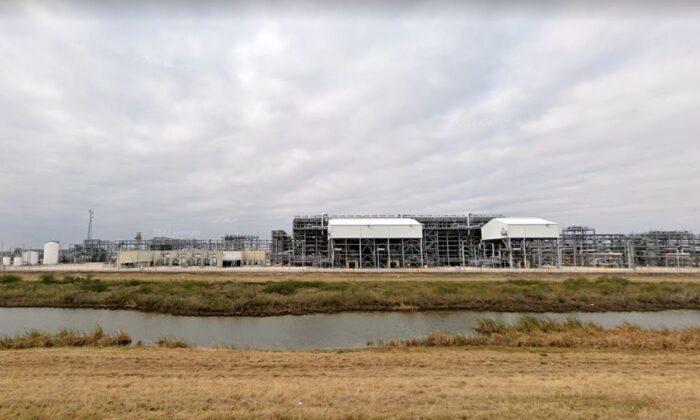American liquefied natural gas (LNG) prices are expected to tumble by almost a third this year, as milder winter weather is leading to a glut.
LNG prices are dropping as supply growth has outpaced demand growth in recent months, according to the U.S. Energy Information Administration (EIA), in its Short Term Energy Outlook (STEO), on Feb. 7.Domestic production of natural gas is expected to rise to a new high in 2023, while demand has tumbled due to warmer-than-expected weather, EIA researchers said.
The EIA estimates that Henry Hub natural gas spot prices will average $3.40 per million metric British thermal units per day (MMBtu) for 2023 and $4.04 MMBtu for 2024, down from January’s estimates of $4.90 MMBtu in 2023 and $4.80 MMBtu in 2024.The Henry Hub annual natural gas spot price was at $6.42 per MMBtu in 2022.
Mild Winter Weather Reduces Demand for Natural Gas
The “significantly warmer-than-normal weather in January that led to less-than-normal consumption of natural gas for space heating and pushed inventories above the five-year average” has led the EIA to revise its outlook for Henry Hub prices.However, “Extreme weather events and production freeze-offs could still potentially cause price spikes at both the Henry Hub and in regional markets, but that potential diminishes as spring approaches, particularly now that inventories have moved back above the five-year average,” the EIA researchers added, noting that “natural gas prices remain very volatile.”
Heating season consumption came in 16 percent below the 10-year average in January, leading Henry Hub spot prices to average at $3.27, dropping more than $2 compared to prices in December, according to the EIA.
The latest STEO report is based on near-normal weather conditions for February and March.
If weather conditions are colder than expected, this could put upward pressure on LNG prices, as the winter heating season closes out.
The agency decreased its second-quarter Henry Hub gas spot price forecast by $1.48 from the previous month’s estimate, to $3.27 per MMBtu.
The outlook for the third quarter was slashed by $1.38, to $3.47 per MMBtu, while the fourth quarter was reduced by $1.23, to $3.76 per MMBtu.
Lower-than-average natural gas consumption last month, coupled with U.S. LNG inventories rising above the five-year average, may lead “the withdrawal season at the end of March“ to close ”at more than 1.8 trillion cubic feet, more than the five-year average,” according to the STEO.
LNG Production Grows While Demand Drops
Meanwhile, the agency’s projected dry gas production is projected to grow to 100.27 billion cubic feet per day (bcfd) in 2023 and 101.68 bcfd in 2024, from a record 98.09 bcfd in 2022.
The agency also projected domestic gas consumption would fall to 87.04 bcfd in 2023 and 86.10 bcfd in 2024 from a record 88.63 bcfd in 2022.
If the projections hold, 2024 would be the first time since 2015 that LNG output will rise for four years in a row and the first time that demand declines for two consecutive years since 2006.
The most recent projections for 2023 fell below its January forecast of 100.34 bcfd for supply, but topped its January forecast of 86.74 bcfd for demand. However, the EIA’s latest projections for this year were higher than its February 2022 forecasts of 97.97 bcfd for supply and 83.85 bcfd for demand.
The EIA estimates average that U.S. LNG exports will reach 11.78 bcfd in 2023 and 12.59 bcfd in 2024, up from a record 10.63 bcfd in exports last year.
The agency’s 2023 LNG export forecast fell below its projections of 12.06 bcfd in January due to the delayed reopening of the Freeport LNG export plant in Texas.
“But U.S. LNG exports in our forecast rise once the Freeport facility is back online, and LNG exports increase by 11 percent (1.2 bcfd) on an annual basis in 2023 compared with 2022,” said the EIA.Meanwhile, “We expect less demand for natural gas than last year for most of 2023 due to decreased demand in the electric power sector as more renewable electric generation sources come online throughout the year and due to decreased demand in the industrial sector as a result of an expected drop in manufacturing activity,” researchers concluded.
Other Fuels Hit by Milder Weather
Regarding oil, the EIA revised its outlook on U.S. crude production for 2023 up to 12.5 million bpd, from its previous forecast of 12.4 million bpd.American crude oil production in 2022 averaged 11.9 million bpd, with production coming in at 11.25 million bpd in 2021.
The EIA’s Brent crude oil price forecast for 2023 is at $83.63 per barrel.
The oil industry is being criticized being too slow to increase production after it plummeted during the pandemic.
Oil companies have returned money to shareholders, and have been participating in large buyback schemes, to reduce their debt instead of investing in boosting production.
The EIA projected that U.S. coal production would fall from 592.2 million short tons in 2022 to 518.0 million short tons in 2023, the lowest figure since 1964.
Production would likely tumble to 498.9 million short tons in 2024, the lowest since 1963, as renewable sources of power displace coal-fired plants.
On the other hand, mining companies like Consol still expect to boost coal production by about 8 percent this year, and it already has contracts to sell about 90 percent of its stock at prices 20 percent more than in 2022, reported Bloomberg.Reuters contributed to this report.





